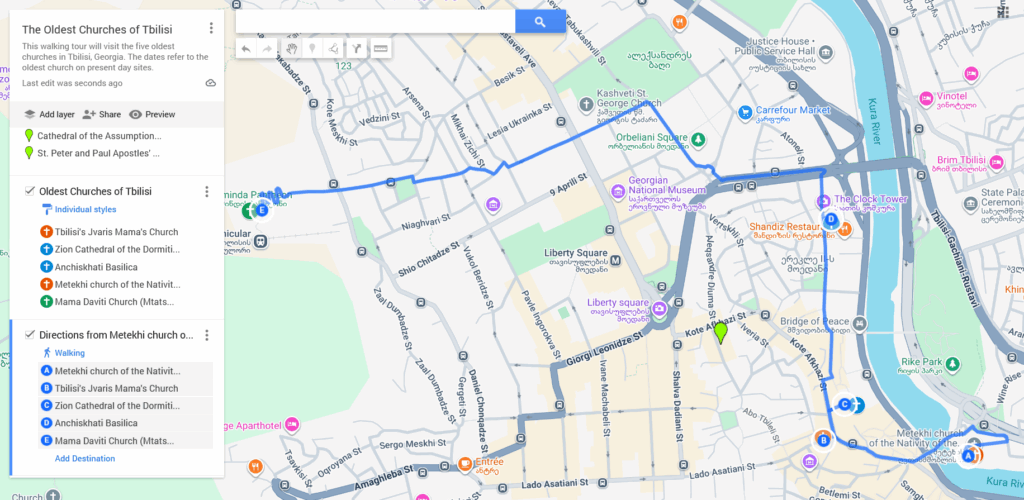- The Oldest 5th-6th Century Churches in Tbilisi, Georgia
- Jvaris Mama Church with its Armenian and Georgian Churches
Visiting the capital city, Tbilisi, where all the churches seem to look alike, which ones are the oldest churches in Tbilisi? Here is a list of the oldest churches (considering when first built) that will provide insight into how the Georgian Orthodox church has remained the religious center for over 1,500 years.
The Georgian Orthodox Church claims a twofold source: the apostle Andrew and a woman named St. Nino who came to the region from Asia Minor. Andrew went from the Sea of Galilee to the Black Sea, sharing the gospel. He most likely followed the path of the Silk Road that went through Tbilisi, Batumi and along the Black Sea.
When Persia and the leaders of Asia Minor and Rome had tension, the Silk Road opened more toward the North. For this reason, the East-West crossroads and the North-South (Russia and Persia) often brought these distant places into the hills of Tbilisi.



Jarvis Mama Complex
The early conversion of Armenia as a nation was followed by the region of Georgia (Iberia—Kartli). In light of this, it is not surprising that the Jarvis Mama Armenian Church dates back to the 5th century. Many Armenians historically lived in Tbilisi until the establishment of the Soviet Republics. The political tensions of that time further distinguished the two groups, and since then, the two churches have been vehemently divided. The two churches in this location show the complexity of their history.
Anchiskhati Basilica
The Anchiskhati Basilica, located in the heart of old Tbilisi and overlooking the river, dates back to the 6th century. Originally called the Virgin Mary Church, it was renamed Anchiskhati in 1675 due to an icon displayed in the sanctuary, which is now in a local museum. This basilica is a rare example of early Christian architecture. It has undergone restoration after suffering damage from invaders throughout its history.
Sioni Cathedral of the Dormition

The original church, constructed by King Vakhtang Gorgasali in the 5th century, was the first church on this site. Destroyed by the Arabs, then Timur, and then the Persians. The current structure shows the reconstructions from the 17th and 18th centuries.
Metekhi Virgin Mary Assumption Church
The current 13th-century building overlooking the river, formed the imperial church for the founder of Tbilisi – King Vakhtang Gorgasali. The church has active prayers. On the perimeter, there is a small pilgrimage walkway that one can enter from the street to visit, down near the river.

Father David Church

Located upon the hillside on the western section of the city, this church was initially constructed in the 6th century. The picture is one of the bell towers on the grounds. Also in this location is the Georgian Mtatsminda Pantheon, which highlights famous writers, artists and other important persons. Note: this site can be walked to from the bus stop or accessed by car. The nearby Funicular does not go to this location.
When possible, I will continue this series on my future visits. Currently, I have visited all of them briefly, but have a video and write-up of only a few of them.
Leave a Reply